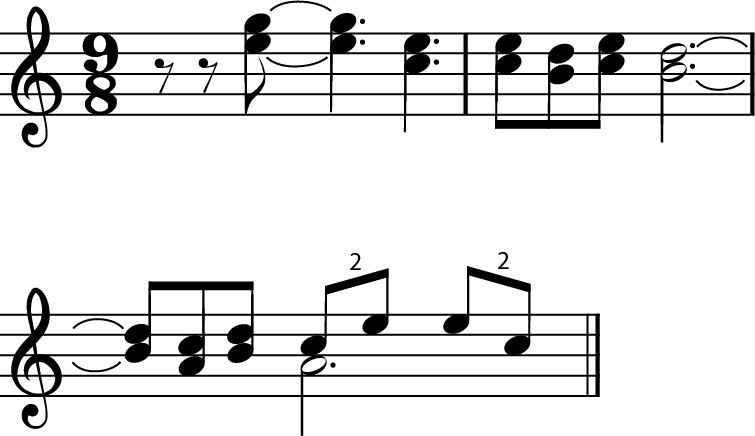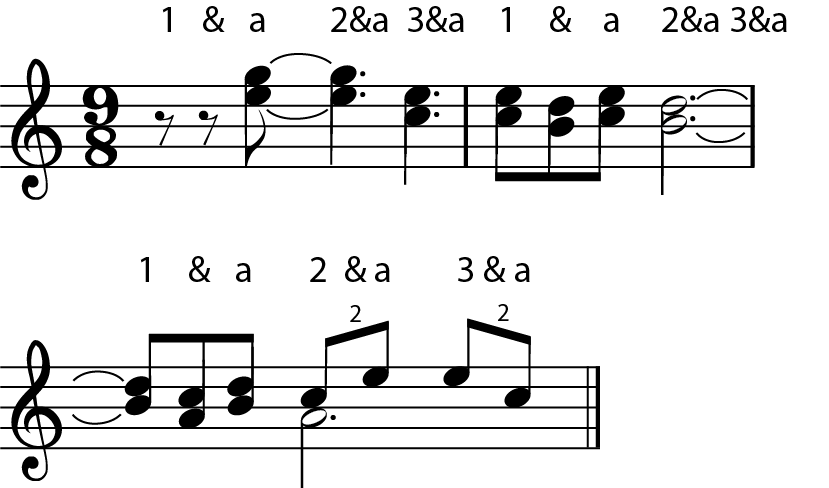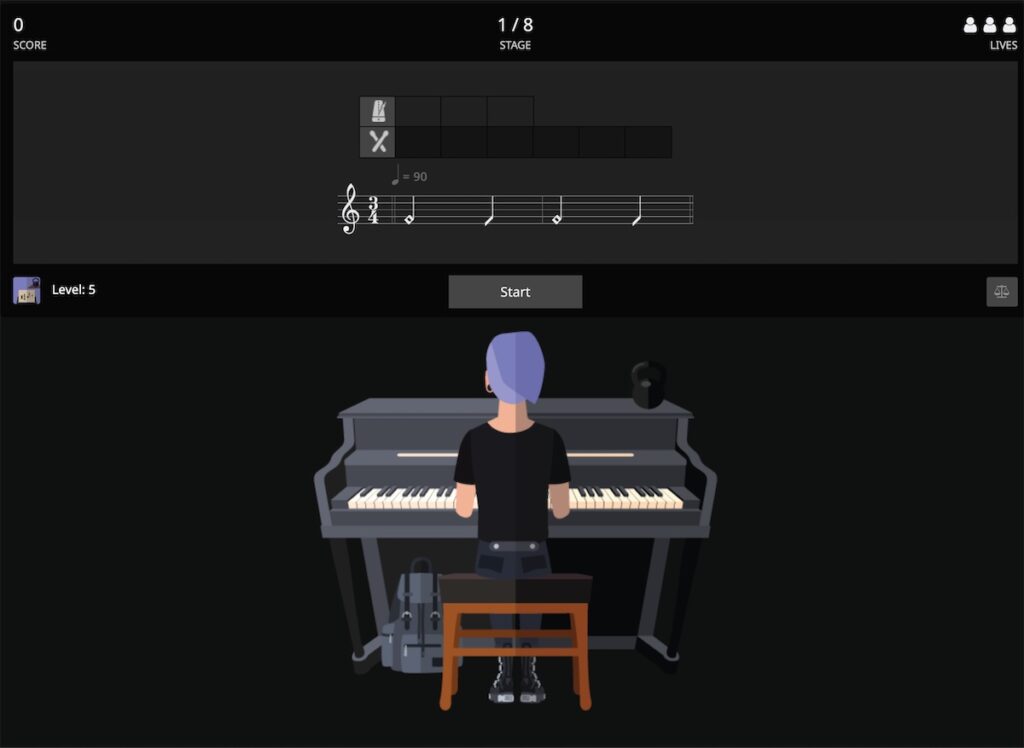Time signature 9/8 is a well-know meter used in many different types of music. 9/8 contains measures (or bars) that have 9 eighth-note beats. Music in 9/8 has three strong beats, each dividing into 3 eighth notes.
We’re going to dive straight into 9/8 time, but you can find more info on what a time signature is in our complete guide to meters.
What is time signature 9/8?
The time signature or meter 9/8 is shown in the music as a 9 above an 8.

This comes before the music starts but after the clef and key signature. The ‘9’ stands for 9 beats per measure and the ‘8’ tells us that each beat is an eighth note. This means that the notes in each measure will add up to nine eighth notes. The eighth notes are grouped into three sets of three.

Now here it is with each eighth note beat labelled. Each group of three would count as one strong beat.

How to count in 9/8
9/8, like all meters, has a distinctive feel to it. We count 9/8 as 1…&…a…2…&…a…3…&…a. The short piece below contains more complex rhythms with a variety of note lengths. Can you spot where each beat falls?

Now here it is with the counting added in.

9/8 is a Compound, Triple Time Signature
There are three broad types of time signature: simple, compound and irregular. Simple time signatures have beats that divide into two. Compound time signatures have beats that divide into three and complex time signatures have a mixture of beats.
In 9/8 each strong beat is a dotted quarter note and therefore can be divided into THREE eighth notes. This makes 9/8 a Compound Time Signature. It is a Triple time signature because there are THREE strong beats in each measure. To learn more about the differences check out our ultimate guide to time signatures.
The notes below show how each dotted quarter-note strong beat in 9/8 time can be divided into three eighth notes.

Songs with In Time Signature 9/8
Claude Debussy : Clair De Lune
Richard Wagner : Ride of the Valkyries
Grieg – Nocturne opus 54 no 4
Ear Training and Meters
To develop as a musician you’ll want to be able to recognise time signatures by ear. This is where ear training comes in, as the more you practice, the better your’ll get.
My recommendation for this is Tonegym as they have a comprehensive and fun program for training your ears. It’s what has gotten the best results with for my own students.
They have a great game called ‘Rhythmania’, were you have to read rhythms in different meters and tap them back using the spacebar. I like how Tonegym structure the game so it always gives you the right level of challenge.
For an in-depth look at ear training, here’s my full review of Tonegym.

What’s the difference between 9/8 and 9/4?
9/4 is also a compound meter. It has three strong beats per measures and each strong beat is broken down into three quarter notes, making nine quarter notes per measure. This means that two measures of 9/8 with equal one measure 9/4.

As a rough rule, 9/8 is used for faster pieces and 9/4 is used for slower pieces. This is not strictly applied but it holds true for most classical music. At the end of the day it is up to composers and transcribers which notation they want to use.
What next…?
If you want to learn more about time signatures, check out our complete guide to meters.
